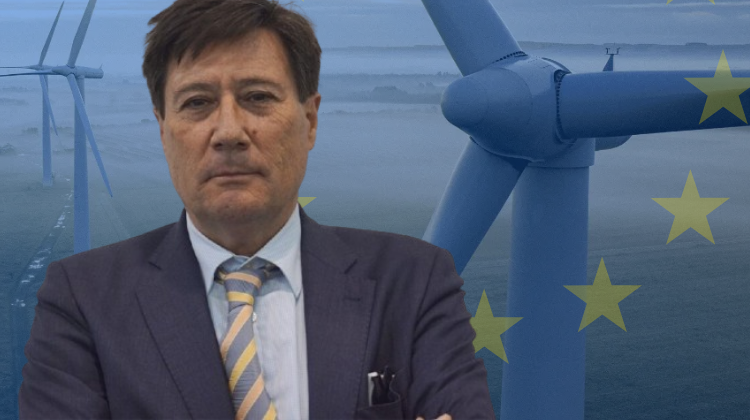Europe must triple its wind capacity to meet the COP28 target. Yet, market fragmentation, negative electricity prices, and grid delays are threatening progress. A clear sign of this context —combined with fierce Asian competition— is the decline of Vestas, which has fallen to fifth place globally.
According to the Global Wind Report 2025, a total of 117 GW was installed globally in 2024, but to meet climate targets, 320 GW must be added annually. This means the current deployment pace covers only one-third of what is needed.
“Despite ambitious goals and advanced regulatory frameworks, Europe has not managed to translate its climate policies into sustained and competitive wind sector growth,” says Ramón Fiestas, global wind energy market expert and former representative of Spain’s Wind Energy Association (AEE).
In an interview with Strategic Energy Europe, the expert points out that although the Fit for 55 package and the 45% renewable energy target for 2030 are strong frameworks, they still lack the technical and economic infrastructure needed for large-scale project deployment.
For this reason, he stresses the importance of investing in transmission networks, storage and regulation to prepare power systems for high levels of variable generation.
Fragmented markets, negative prices and distorted signals
One of the main challenges identified by the Global Wind Energy Council (GWEC) is the ongoing appearance of negative electricity prices in markets such as Germany, the United Kingdom, France, and Spain.
These distorted market signals —caused by an oversupply of renewables with insufficient demand or storage— undermine the financial viability of new wind projects.
“We need to acknowledge the intrinsic value of wind energy and ensure it is reflected in price signals, beyond the current market outcomes,” argues Fiestas, who insists that today’s market mechanisms were designed for conditions that no longer exist and must be updated to reflect current technological and climate realities.
He refers here to the growing influence of the Letta and Draghi reports, which advocate for a unified European industrial policy and a more integrated energy market.
The Letta Report, led by former Italian Prime Minister Enrico Letta, proposes a reform of the EU single market to strengthen its resilience and competitiveness, foster clean technology development, and establish a shared framework for cross-border energy infrastructure investment.
The Draghi Report, headed by former European Central Bank President Mario Draghi, calls for a new European industrial strategy, proposing joint financing mechanisms, stronger coordination between Member States, and a unified approach to building a green industry that can compete with China and the United States.
Emerging opportunities: wind electrification and the digital sector
Despite these challenges, Fiestas identifies several high-impact opportunities. He highlights the electrification of the economy and the integration of large-scale consumers such as data centres as key drivers of future demand.
According to a study by Schneider Electric and 451 Research, energy consumption by data centres in Europe could reach 150 TWh annually by 2030, driven by the growth of artificial intelligence and widespread digitalisation.
He also points to the production of alternative energy carriers, such as green hydrogen, as another potential growth engine. However, the sector currently faces a five-year delay compared to original targets.
“Domestic production of alternative vectors and the electrification of industrial sectors will undoubtedly become powerful levers for wind energy growth,” Fiestas asserts.
He also notes that offshore wind will be strategic for Europe’s development, not only due to its technical potential but also its role as a hub for technological innovation.
According to GWEC projections, Europe could install over 10 GW of new offshore wind capacity in 2025, consolidating its technological leadership despite current cost and permitting challenges.
Auctions and the need for structural reform
Failed tenders and funding shortages have become symptoms of the limits of the current model.
Fiestas welcomes the proposed Green Deal Industrial Plan, which seeks to ensure rapid access to financing and robust supply chains, but stresses that implementation must be swift and efficient.
GWEC reiterates that reforms to market design and auction mechanisms must prioritise the financial sustainability of projects, adapt to changing economic conditions, and allow for realistic price signals.
Europe has the regulation, technology and industrial base needed to lead the global wind transition. Yet it faces barriers related to implementation, market design, infrastructure, and regional coordination, all of which limit its potential.
Fiestas, along with many other industry leaders, agrees: reaching the 320 GW per year target is possible, but requires an immediate strategic shift that links policy, investment, and industrial action.
“It is critical that the European Union invests in transmission networks and enhances the resilience of its power systems,” Fiestas concludes.






























